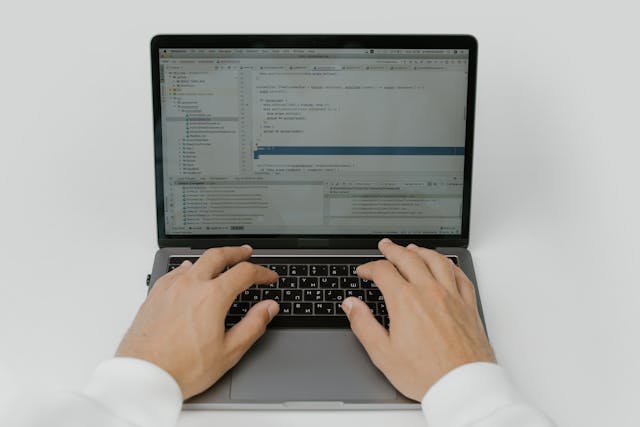Well, yes would be the answer, of course. But is it possible?
You'd be surprised to know that you can save at least 2 hours per day through a simple audit and optimizing your current processes.
But I can't stop doing any of my work, so how can I save time?
The answer is to stop spending time on things that you shouldn't or, rather, stop wasting time. Before we can start saving time, it's important to outline where the time-wasting issues are in our workflow. Our processes are often so ingrained it can be impossible to see them even when they are staring us dead in the face. That's why we've created this list to help you get straight to where the problems are most likely to be lurking.
How is time wasted at work?
Before learning how to save 2 hours per day, let's first see where time slips through the cracks for most private practices.
After all, only you know your problem before you can start tackling it, right?
So here are five common areas where time is usually wasted:
Ineffective Communication
As a healthcare professional, one would expect communication to be a strong point. However, ineffective communication around things like task allocation is an enormous sinkhole for our sector's resources.
Long, unnecessary meetings scheduled to discuss clients or workflow are among the leading causes for time loss within each day. One example of this might be weekly multi-disciplinary meetings (MDT's) scheduled into your calendar irrespective of whether a client caseload requires it. Meaning time is spent discussing things that are not relevant to the schedule. A solution to this would be to use a software platform that can act as a shared workspace with your team to make real-time updates and changes visible to everyone involved.
Unnecessary Emails
Pointless emails are also a great source of time-wasting.
How many times have you come into the office to a full mailbox?
Long emails that take time to construct and disseminate. They are a surefire way of losing time which is better spent with clients.
The bottom line here is not to use emails in excess, don't do it.
As you can probably imagine, these issues go hand-in-hand as meetings that don't focus on the plan won't result in transparent task allocation, which means further confusion, more emails, and more meetings when one should have sufficed in the first place.
Scheduling merry go round
Scheduling meetings and making sure attendees show up to them can be tricky. Messaging back and forth to find a time that suits everyone, then turning up only to realize you got the wrong day is a perfect example. One solution to this could be to use a software platform that sends out automated reminders to practitioners and clients alike. Stopping the back and forth of finding a suitable time for everyone. I find this particularly difficult as working with clients who are apprehensive about receiving treatment in the first place often avoid appointments as it is.
Mundane, Repetitive Tasks
The healthcare sector seems to be one of the last to adopt the gift of software-powered automation. This appears to stem from the attitude of "if it's not broke, don't fix it" or some misguided projection that integrating automation into our workflow won't benefit our clients. I would have to oppose both these opinions vehemently.
Clients have demonstrated that they are both willing and able to adopt more digital healthcare practices. We need to change our mentality and give them more credit. If that doesn't change your mind, then some other reasons to automate are: clinician boredom, decreased team morale, lower productivity, human error (that puts our clients at risk), and less client-facing time.
Some excellent practice management software platforms to consider trialing are Carepatron, Simple Practice, TherapyNotes, and Cliniko.
Carepatron, for example, offers several different capabilities such as a patient portal software, healthcare scheduling software, medical dictation software, and the ability to conduct telehealth sessions. Meaning you can work on one platform and don't have to switch between several different providers to work throughout your day.
Practitioner Motivation
By automating the mundane tasks that you avoid, you'll spend significantly more time doing the things you want to do. These are the aspects of your role that you enjoy and are often the reason you got into healthcare in the first place. 🧑🏽⚕️
Motivation leads to productivity. Productivity leads to better health outcomes for your clients.
Eradicating the parts of your role which you hate will give you space to reflect and engage in personal development, improve your practice and help your clients.
How to change your workflow to be a productive practitioner
So now we know what we need to stop doing. But what do we need to start doing to improve?
Create SMART goals
Well, the first step would be to set some clear goals for yourself. What are some things you wish you could incorporate into your practice? Maybe you've seen another clinician doing something you wanted to do or using a new healthcare framework that you haven't had the time to learn. You've probably set hundreds of treatment goals for clients, so now is the time to set some for yourself. Make them clear, make them definitive, and make them measurable. Put them somewhere you'll see them constantly and keep track of your progress. I am a massive advocate for SMART goals; whenever I create goals, I utilize the SMART framework to implement and monitor.
A SMART goal is:
- Specific
- Measurable
- Attainable
- Relevant, and
- Time-Based.
Specific goals are defined; they clearly outline what you need to achieve, for example, instead of saying, "I want to get better at running." You would outline something like, "By 13 April 2022, I want to have achieved a half marathon in under 2 hours." Being specific in your goal also makes it measurable, i.e., the initial statement "I want to get better at running" is hard to measure. How will you know when you are better at running? At what point will you decide you are better at running? Hence, the 'M,' measurable, is another vital part of the goal, so you know when you have improved, and so you can get that rush of endorphins for your excellent work.
Another critical part of the SMART framework is to make sure your goal is attainable. Continuing with the running example, if you've never run before, you're not going to be doing a 100km ultra-marathon in 3 weeks. Be realistic, take into account that life happens, and sometimes we have to be a bit flexible. The 'R' and the 'T' stand for time-based, which is pretty self-explanatory, and the 'T' is for time-based, which often goes in with the measurable part of the goal.
Automate, Automate Automate
The second thing I would recommend that will mean all these fancy SMART goals you create are attainable is to automate your processes. Automate all the things you don't enjoy doing (well, this is obviously within the realm of what is currently possible and financially feasible). Within the healthcare sector, we tend to be reluctant to adopt new technology or alter our processes. Which, for whatever reason, means not only is our job harder, but our clients don't get the treatment they deserve.
This step is the part that will mean you get your guaranteed 2 hours each day in your practice. Without it, there isn't any way you can slow down time or stop doing any of the tasks you currently do.
Have I convinced you?
If so, read on, and I'll share with you the software platform I currently use and why.
As mental health clinicians, we are limited in our options. We don't have access to software like people who work in marketing or media, and neither do we want to! It would be too complicated and give us too many options. Working in the mental health sector is hectic enough without requiring us to learn about the software. I chose Carepatron because it's intuitive and straightforward. It does what I need and nothing more. Here are the things I rely on it to do for me daily;
- Billing and healthcare payment software
- Auto reminders
- Client notes
- Task sharing
- Clinical reports
- Voice to text transcription
- Enable a shared workspace
- Communication with clients
- Telehealth platform
- Appointment reminders
I use Carepatron to manage all my appointments and tasks. All I have to do is enter them into my calendar. I can send as many reminders as I like to myself, other practitioners, and my clients. This saves time by making sure everyone (including me) knows where they should be and when. The digital workspace is also conducive because I can share notes and reports with other practitioners to have access before the meeting. When we have set a time to talk, we are both already up to date and don't have to take time catching up on the last session.
I like having access to a digital client workspace because clients can share updates between sessions without access to my email.
Due to my large caseload, I also found it challenging to keep track of exactly where I was with each client and how we ended in the last session. Doing home visits, I often used to forget paper files meaning I would spend the first part of the session getting up to speed. Having access to digital notes on my phone means that I can access them anywhere, anytime.
I have found this has improved my client relationships and meant that I could spend more time with them and less time writing up notes as I can transcribe on the move and get to the next client more quickly.
I love being able to get down details directly following each meeting. Going back to them, I have found they are complete, have more depth, and mean my clients feel more supported in the next session. Other practitioners I might work with can get a clearer picture of our progress.
I could go on forever about using this software platform to improve my life. Still, I will limit it to one more great pro before suggesting you go out and try it yourself.
Automated billing and payments
Going out on my own as a clinician seemed like a great idea until I realized it meant I had to bill clients myself. I found this uncomfortable, time-consuming, and sometimes harmed the rapport. I did not have to discuss payment before or after each session which was the most delightful thing. I am not great with my practice's financial side and found it a huge relief when I could get support to ensure I was doing everything correctly.
Carepatron is simple, user-friendly, is HIPAA certified, and has 24/7 support.
It will save you 2 hours per day, I guarantee it!





.jpg)

.jpg)


.jpg)




.jpg)

.jpg)


.jpg)




.jpg)


.jpg)
